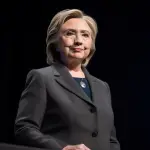The recent debate over the Federal Reserve and America’s trade policies has been stirring quite the political stew. When it comes to the Fed’s management of funds for its expansive project, it almost feels like someone painted a target that screams, “Overspend here!” The project’s costs seem to have shot up from $2.5 billion to $3.1 billion, raising eyebrows and, quite frankly, a few groans of exasperation from those of us who prefer more bang for our taxpayer buck. Let’s just say the Fed’s new nickname, “Fed Mahal,” couldn’t be more fitting—such a luxurious title for a place costing a small fortune.
Meanwhile, President Trump, ever the iconic dealmaker, is putting gentle pressure on Federal Reserve Chair Jerome Powell to lower interest rates. It’s as if Trump is trying to save America $180 billion by sheer force of willpower and persuasion. If truth be told, one could almost envision a dramatic showdown akin to an episode of “The Apprentice,” complete with a surprise firing. Trump’s strategy seems simple: if lowering rates can save dollars and make financial sense for America, then it should practically be a no-brainer, right?
On the international front, there’s been quite the chatter about trade deals with Japan, Indonesia, and the Philippines. While Japan has a hefty trade surplus with the U.S., it’s the $550 billion investment from the Japanese government that has tongues wagging. Now, some might mistake this for just another corporate venture, but it’s much more. Trump’s approach transforms this opportunity into a chance to fire up American manufacturing, building factories for critical goods right here at home at his own discretion. It’s like opening a store where “Made in China” becomes “Made in America” with a little help from Japan’s checkbook.
Then there’s China, still grappling with tariffs imposed by Trump. For all the noise about these tariffs, the predicted inflation hasn’t reared its head. While some speculated a consumer backlash, what’s starred in this economic comedy is China absorbing the cost. They need our market too badly to wreck their own factories. It’s almost amusing to watch the pretzel twist of global supply as Trump’s tariffs usher factory closings overseas, while Americans barely blink at the grocery store checkout.
In this international chess game, Trump has been channeling his inner strategist. With Japan willing to pay the price to cut tariffs and China twisting its economy to comply, the outcome seems favorable for American industry and workers. This administration’s push to reduce dependency on foreign manufacturing spells opportunity for U.S. companies. One thing is clear: Trump’s plan is as much about towering moxie as it is about high stakes economic poker, and for now, all eyes are on the next big move on this bustling world stage.




